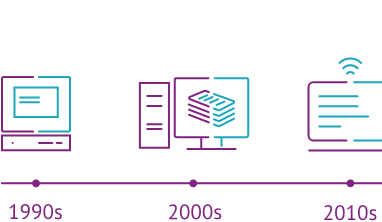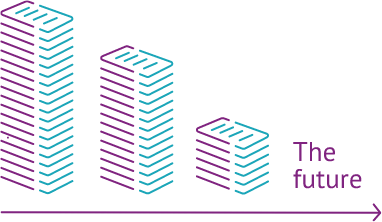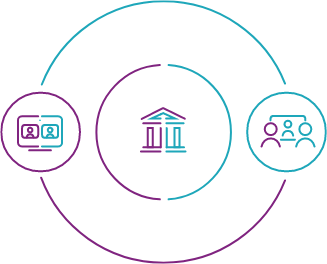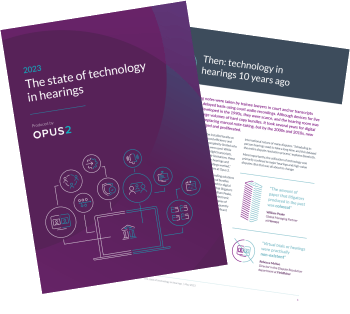
Key benefits of technology in hearings
Faster, more efficient, more comprehensive preparation. More compelling presentation of evidence. Lower costs. More sustainable proceedings. Modern technology has transformed hearings across the board.

We spoke to experts across the legal sector to investigate the progress that has been made and consider the opportunities ahead.
Download report
New technology first emerged in courtrooms in the 1990s. Over the 2000s and 2010s, it proliferated as tools like digital transcription and electronic bundling made proceedings more efficient.

The modern-day trial is heading for a paperless future. Empowered and enabled by the latest technologies, from sophisticated e-bundling services to real-time transcription tools, virtual and hybrid proceedings are now commonplace.

Faster, more efficient, more comprehensive preparation. More compelling presentation of evidence. Lower costs. More sustainable proceedings. Modern technology has transformed hearings across the board.

The benefits are obvious, but the legal industry can be slow to change and some hurdles remain before a completely paperless trial becomes the norm.


Post-covid, hearings have largely returned to the physical courtroom. The setting is familiar, but the technological framework has transformed: virtual and hybrid hearings, enabled by the latest technology, are here to stay.

Read more about the present state, and potential future, of technology in hearings, including insights from global leaders across the legal industry, in our report.